I'm Not Waiting for 2026 – 'Warm Minimalism' is the Single Biggest Trend Designers Say They're All Adopting Next Year
Minimalist decor just got a makeover – and this time, it’s all about warmth and feeling

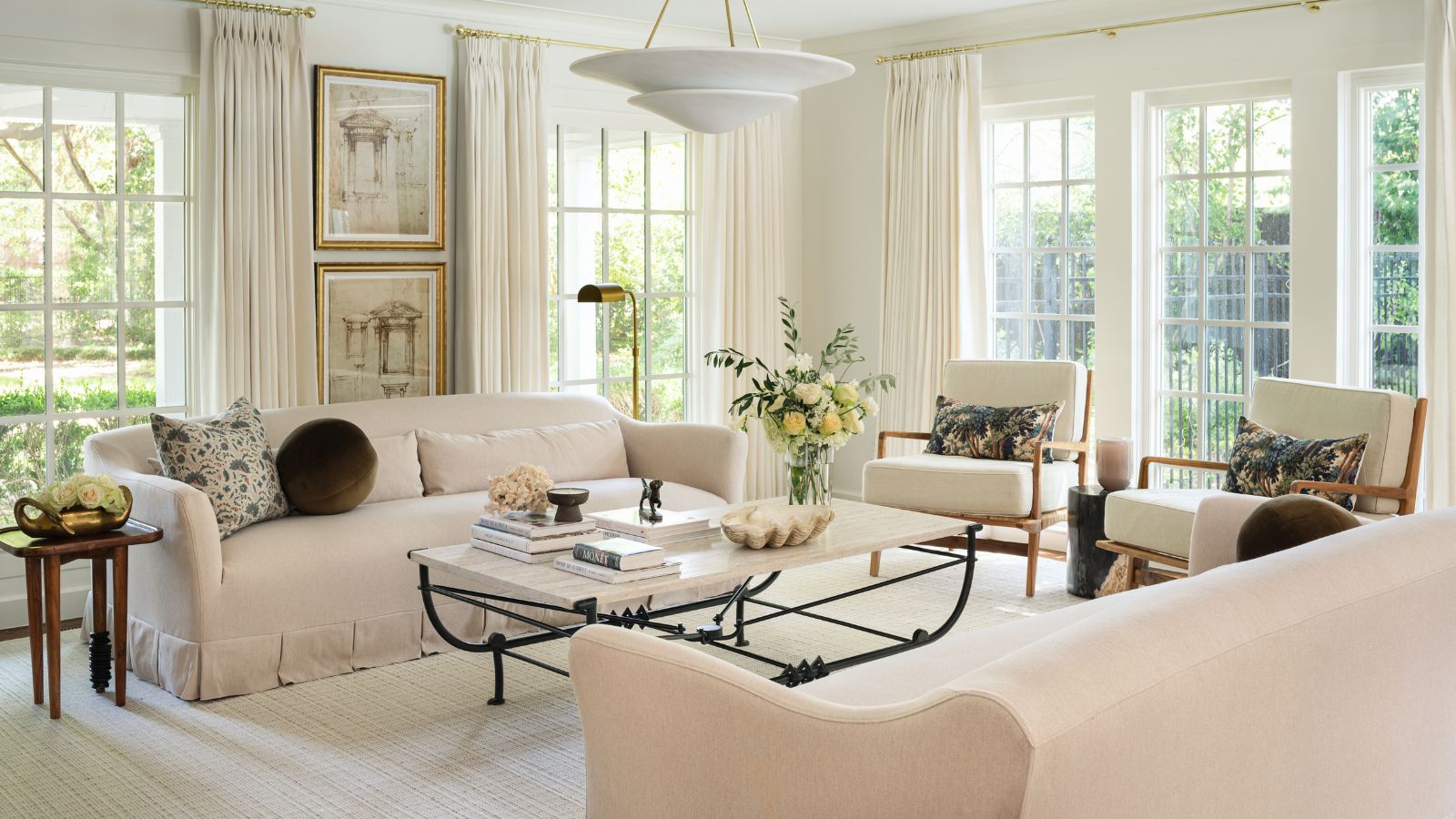
Taking cool, clinical interiors and flipping them on their head, warm minimalism is a design aesthetic that caters to clutter-phobes, neutral fans, and those who avoid cool lightbulbs like the plague.
The look blends minimalist decor ideas with warm color schemes, textures, and patterns to create an interior design trend that feels lived-in, inviting, and oh-so right for 2026.
I’ve seen it emerging everywhere – from softly hued kitchens and linen-wrapped living rooms to bedrooms cocooned in subtle layers. It’s a look that speaks to where design is right now: calm, grounded, and above all else, homey. If traditional minimalism was about less, warm minimalism is about less but better.
What is 'Warm Minimalism'?
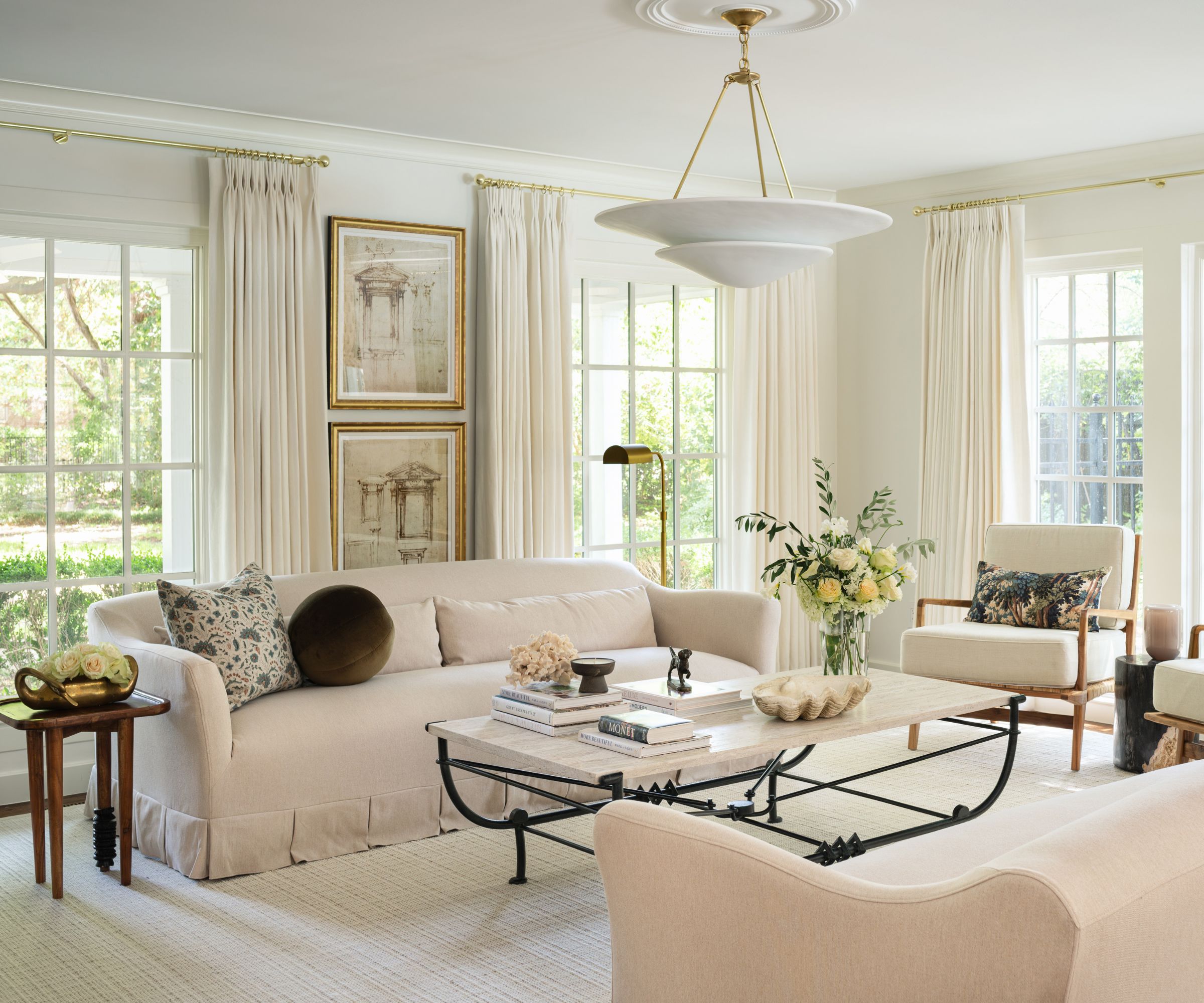
So what does warm minimalism actually look like in practice? According to designers, it’s all about softening the edges by swapping stark white for warmth, sharp angles for soft texture, and perfection for personality.
As designer Molly Torres Portnof of DATE Interiors explains, 'While minimalism can sometimes feel stark or cold, warm minimalism pairs simplicity and intentionality with warm, earthy tones, layered textures, and natural materials. The effect is inviting, cozy, and beautiful.'
Designer Sean Symington says that this comforting shift is here to stay: 'I think we’ll definitely see more warm minimalism trends in the future,' says Sean. 'Achieving this is about simplicity with soul – creating calm spaces that still feel lived-in,' he explains.
And Robin Bird agrees: 'Warm minimalism is definitely going to be one of the dominating themes going into the new year. People are getting bolder with their choices (yay!) and really embracing the cozy.'
Design expertise in your inbox – from inspiring decorating ideas and beautiful celebrity homes to practical gardening advice and shopping round-ups.
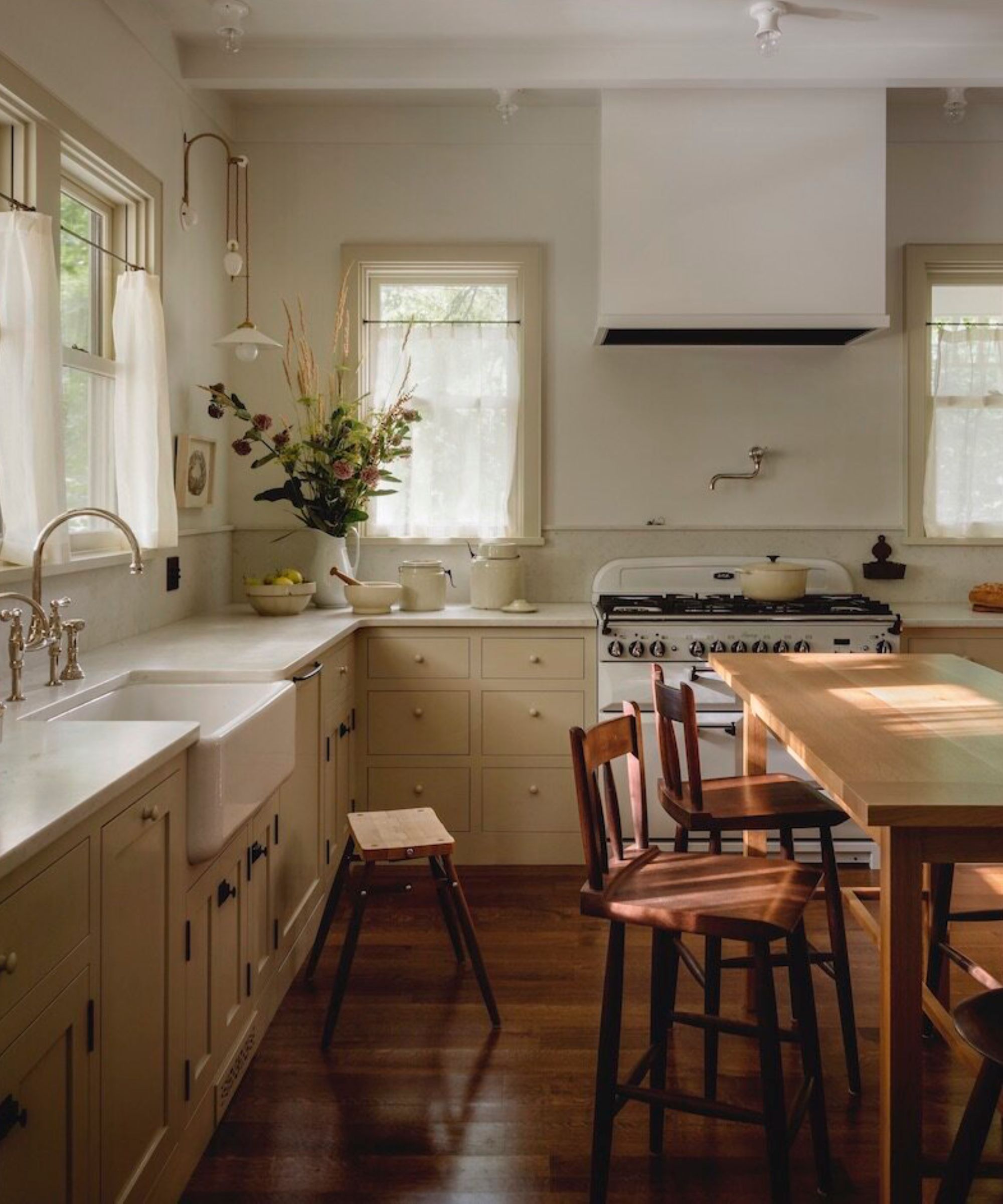
'Warm minimalism has been in for a while and is here to stay,' adds Sara Alexander, founder of The Scale Collective. 'In the context of our busy lives, and the constant stream of news, people have and will continue to flock to minimalism because they want to live in a space that feels like a sanctuary, and a spa like environment, that warmly envelopes them when they are home.'
Not to be confused with cozy modern, although they certainly share design traits, at its core, warm minimalism is about stripping things back (but not too much).
Designer Sarah Ellison of Frank & Faber describes it as 'an evolution of some of the more pared-back interiors we’ve seen over the last decade.' It shares the same calm restraint as classic minimalism, she says, 'but has none of the austerity or starkness. It’s about creating spaces that feel pared-back and considered but inviting and cosseting.'
For Bethany Adams, it’s also about rethinking what minimalism can be. 'Minimalism gets a bad rap for being too stark and cold – all those white walls and sharp corners,' she says. 'The new look embraces the simplicity of the original, while welcoming softer colors and richer materials.'
How to Get the Warm Minimalist Look
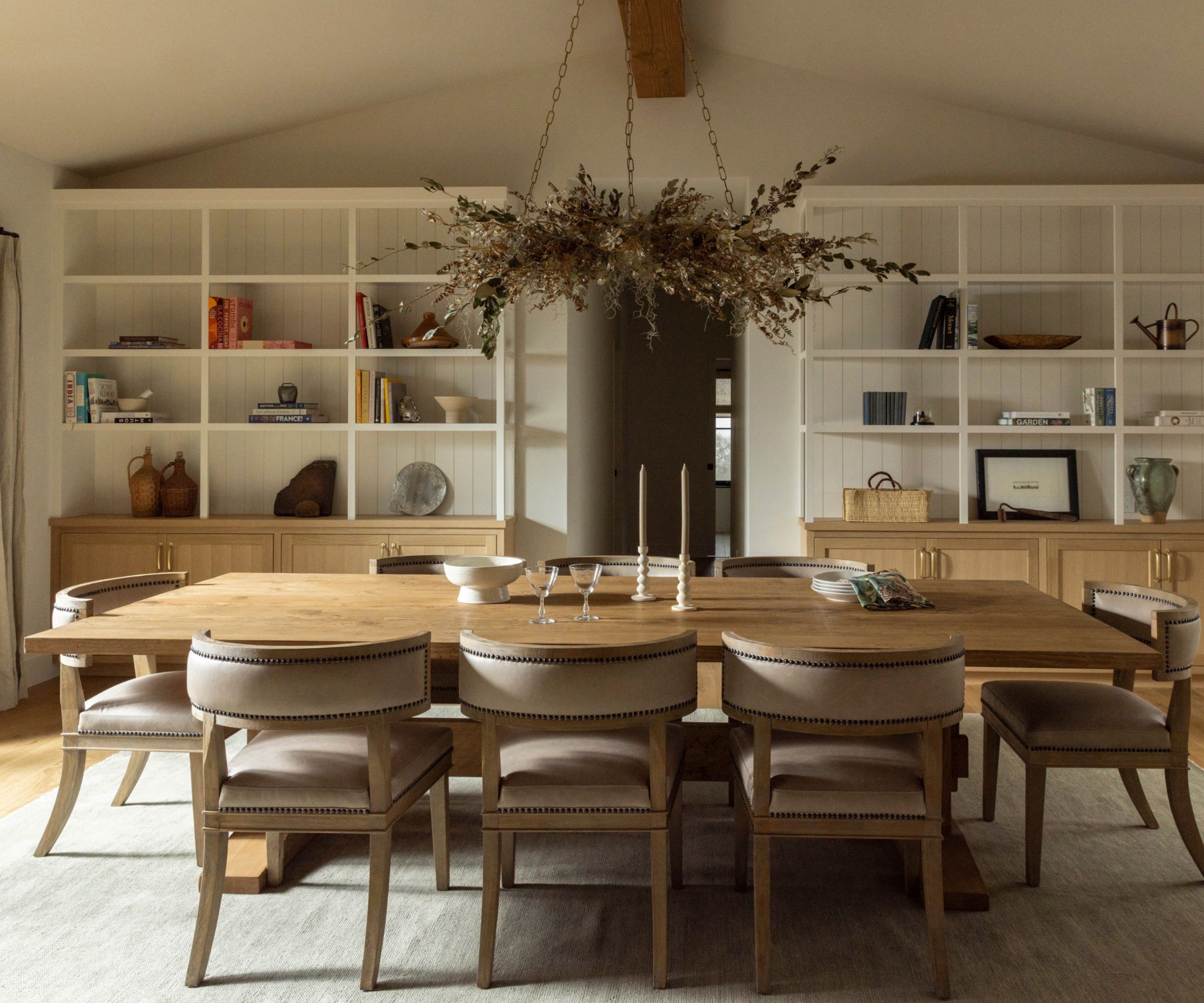
Warm minimalism is about finding balance – keeping spaces calm and pared-back while introducing enough warmth, depth, and character to make them feel lived-in. This isn’t about cluttering a minimalist space with accessories, but about layering texture, tone, and feeling.
'Warm minimalism never feels cold, but instead gives that golden hour feeling – the moment that invites you to pause and stay a while – that you want to extend and relish,' adds Sara Alexander. From colors and materials to clutter-free curation, here’s how to bring this enveloping trend home.
1. Start with Soft Color

As you might expect, decorating with neutrals is the foundation of warm minimalism. Set the tone right with your color palette, and everything else will follow.
Alongside creamy whites, taupes, and earthy tones, designers are leaning toward hues that pack some gentle warmth, rather than pure whites or cool grays. 'To me, warm minimalism is all about creating spaces that feel pared back yet intentionally layered,' says Chelsea Miller of Good Ave Design Studio. 'The key lies in texture and embracing warmer neutral tones while steering clear of cooler color palettes. I recommend creamy whites, taupes, and rich earthy hues that bring a sense of calm and depth.'
'Think neutral paint colors, like Benjamin Moore’s Pale Oak and Farrow & Ball’s Dimity, and natural materials like leather, wood, linen, and wool,' suggests Molly Torres Portnof. These hues bring warmth without heaviness, and still remain a perfectly neutral backdrop to the rest of your scheme.
Sean Symington also notes that deep hues with warm undertones instantly add depth: 'Warmer tones like ochres, soft terracottas, and creamy neutrals add instant depth and warmth,' he adds. 'Color drenching is also brilliant for this style as it makes a bold, cohesive statement without doing too much.' The idea is to envelop a space in warmth, creating a seamless, cocooning effect rather than relying on contrast.
2. Focus on Texture

In minimalist spaces, texture often replaces pattern, becoming the main source of richness and depth. And the same can be said for this aesthetic, too.
'In this modern project [seen above], we felt like adding warmth was necessary to soften the stark modern architecture, explains designer Bess Lovern. 'We love creating a really neutral palette with the fabrics and furniture and leaving space for the art to really bring the personality.'
'We like to make sure we are always incorporating different finishes, materials, and sheens, so even when the color palette is monochromatic and minimalist, the space still has character,' she explains.
Sarah Ellison calls texture and materiality the 'key to success' in this look, adding: 'Focus on warm naturals like raw oak, linen, clay, and stone alongside aged and ever-aging metallics,' she suggests. Something like the unlacquered brass Weatherford Sconce from Rejuvenation would work perfectly.
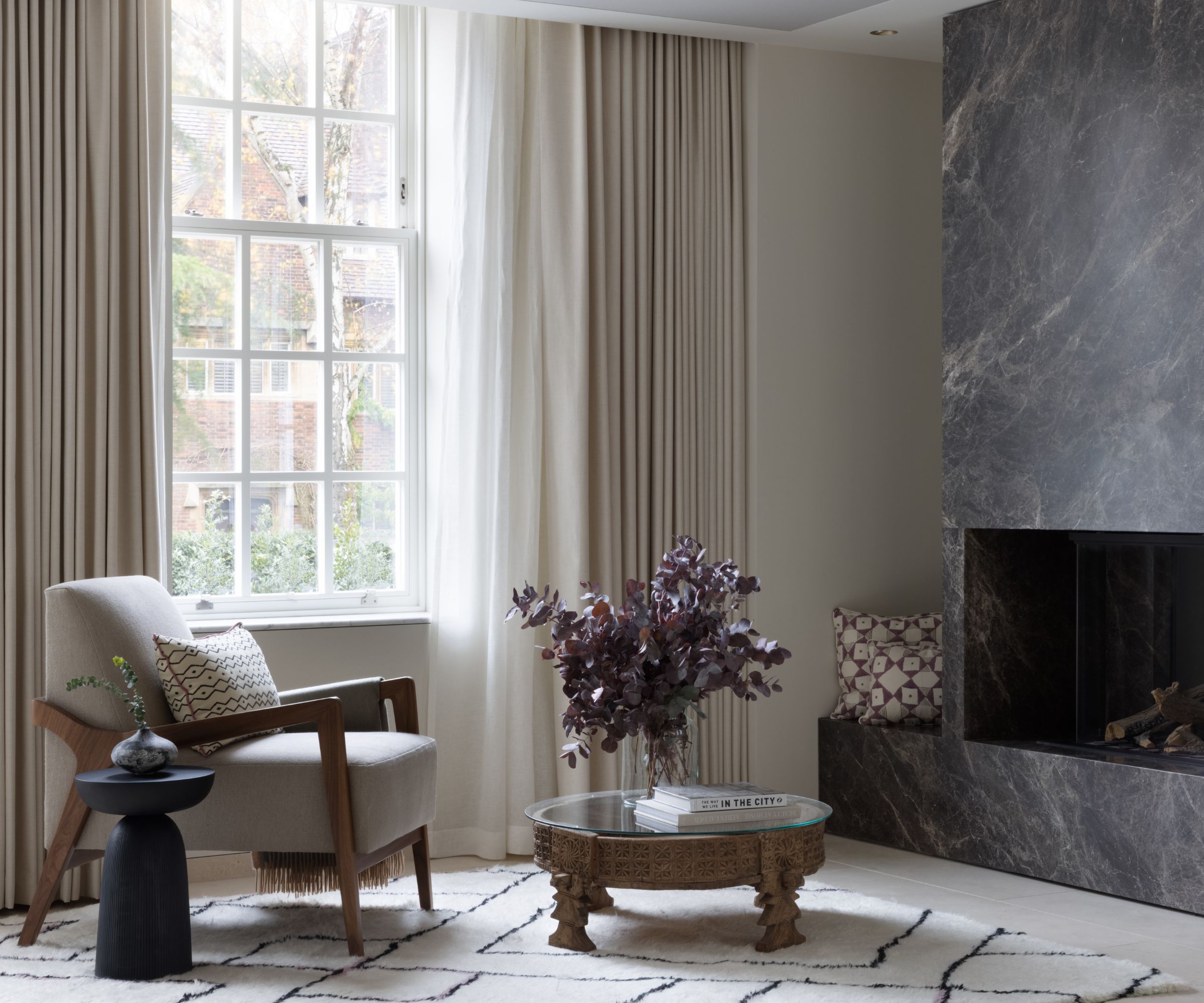
'Room color ideas should be kept simple with a color block aesthetic providing the calmest of backgrounds in warm, nature-inspired tones like soft neutrals, mushroom, muted ochre, and green shades,' Sarah adds.
'Soft furnishings are simple but textured and natural with long linen or heavyweight cotton drapes, woven rugs and textured lamp shades,' she continues. 'In warm minimalism, we like to embrace imperfections with handcrafted tiles, aged timber floors, and naturally creased linens. For designers working in historic or rural homes, warm minimalism offers an ideal bridge between old and new, allowing original character to breathe within a quietly contemporary framework.'
To master this layered look, you also want to think beyond textiles. 'If you have the budget, plaster really softens any space and creates a richness and depth,' Robin suggests. Consider tactile surfaces, aged hardware, and stone or marble features to lend instant warmth. The Kimberly Side Table from Lulu and Georgia blends burnished brass and warm marble to combine the look, while Robin suggests swapping pillow covers and adding a comfy quilt.
3. Layer with Warmth
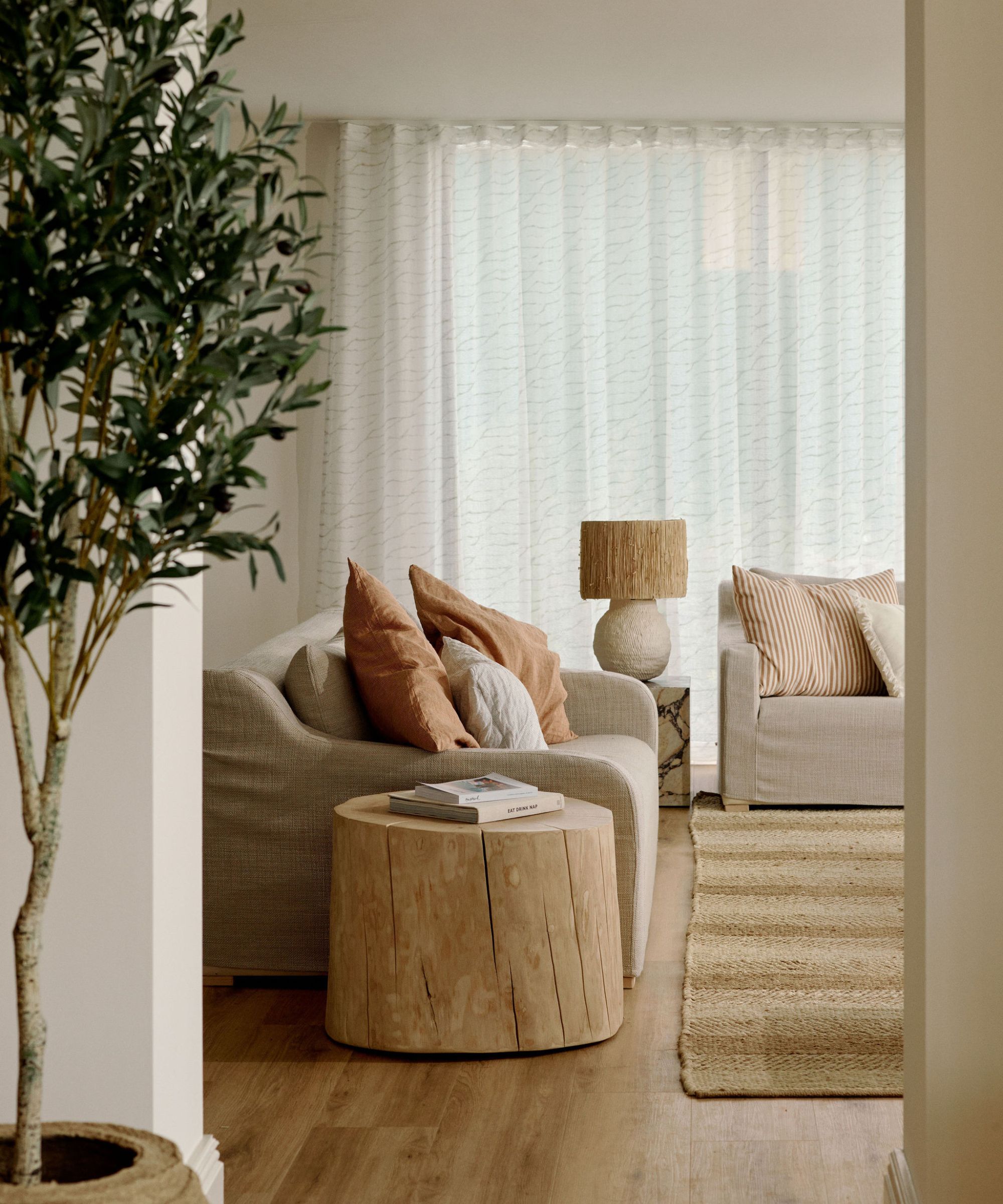
Once the foundations are in place, it’s layering that brings the scheme to life. Warm minimalism might begin with restraint, but it finds its soul through pieces that add softness, light, and personality.
For designer Lauren Gilberthorpe, this extends to how a space feels as much as how it looks. 'Soft colors and textures play an important role, but equally, understanding the light within a home can make a huge impact,' she advises. 'Artificial lighting can make a room feel stark if it is not designed carefully. Warmth comes through both materials and setting.' Designers recommend swapping your bulbs for Dimmable 2700K Warm White Bulbs for extra ambience.
'Likewise, consider all of our senses when designing – how a space looks, feels, and even smells,' she adds. 'Smell immediately evokes the senses and contributes to the atmosphere.'
'A simple guide to creating this look is to invest in key staple furniture pieces, much like choosing the basics for a capsule wardrobe,' Lauren continues. 'These are pieces that are timeless and anchor the room. From there, layer slowly with materials, art, and rugs. Rugs are particularly important as they create warmth both visually and physically. Thoughtful accessories, cushions, and throws then complete the space and give it character.'
4. Curate, Don’t Clutter
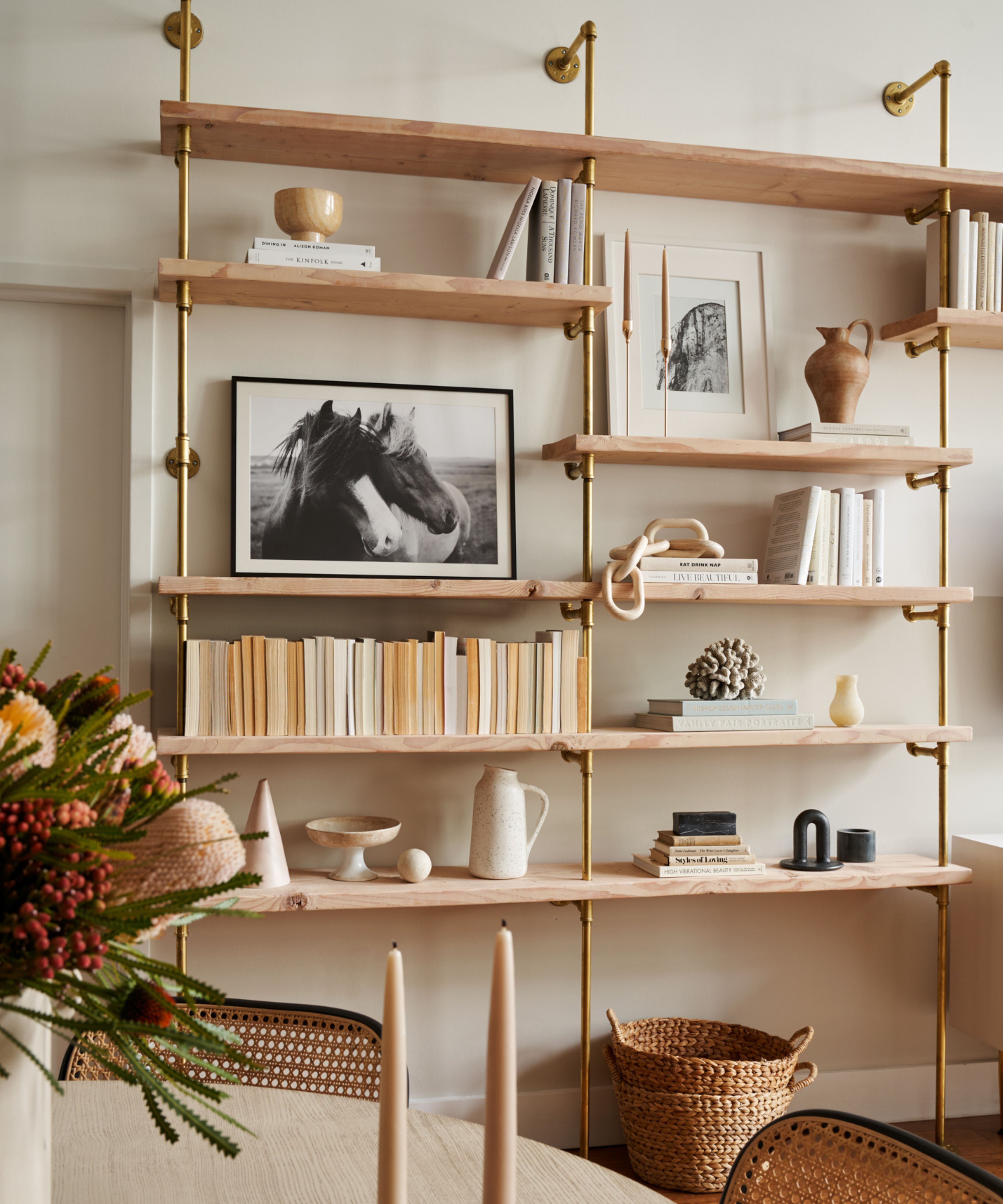
Finally, restraint is what separates warm minimalism from simple coziness. The aim is not to fill a space but to refine it, paring back what’s unnecessary so that the best bits can shine. 'The idea is to refine homes so they are comfortable but uncluttered,' says Lauren.
'The best way to try the trend is to pick a pared-back palette, and forgo the luxurious layers and pattern play that can lead a space towards maximalism,' Bethany advises. 'Deep, rich hues help as does furnishing in natural materials: think stone, wood, metal. Above all, keep it simple and serene, and your space will be both warm and calming.'
Sarah Ellison echoes the sentiment, adding: 'Decorative pieces are chosen sparingly but every one tells a story, has a tactile quality and an imbued sense of history and character.' It’s not about the absence of things, but the presence of just the right pieces.
Shop the Look
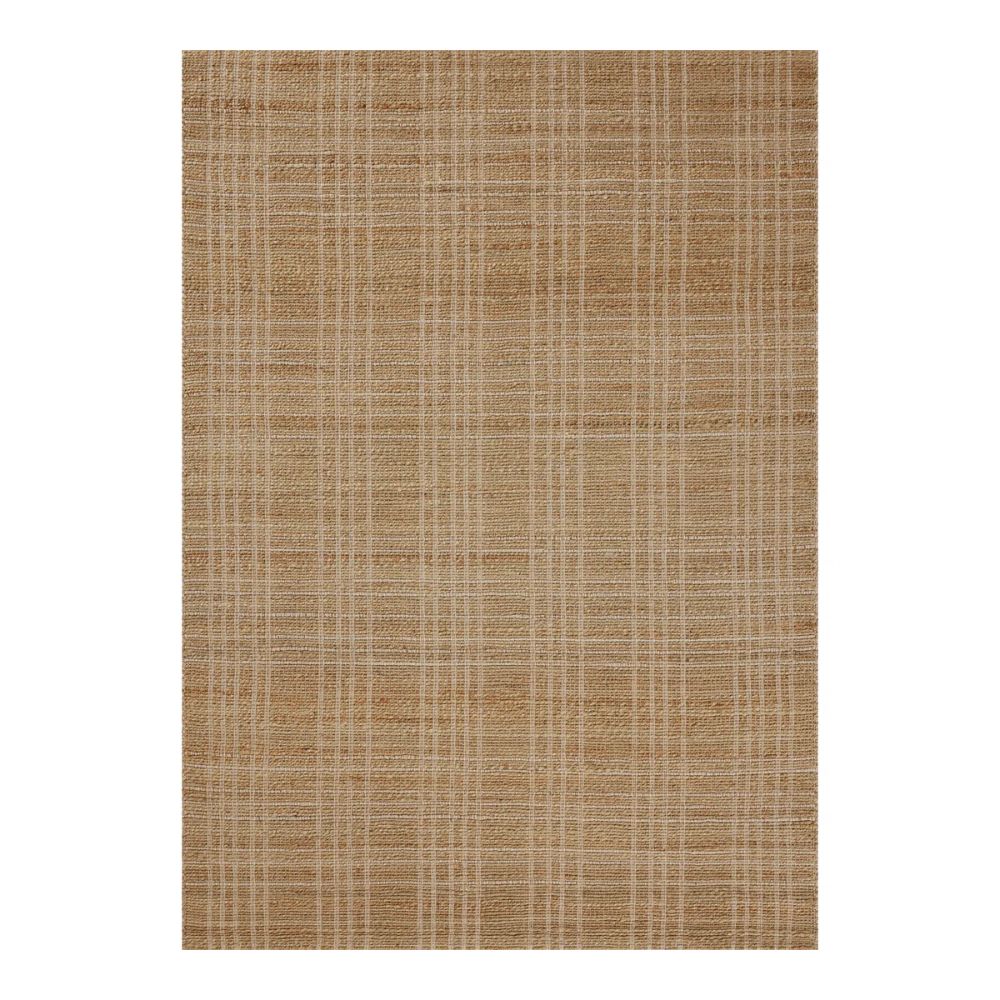
Ground a minimalist space with texture. This woven area rug from the Chris Loves Julia x Loloi collection introduces subtle pattern and warmth through its natural jute weave and soft grid design.
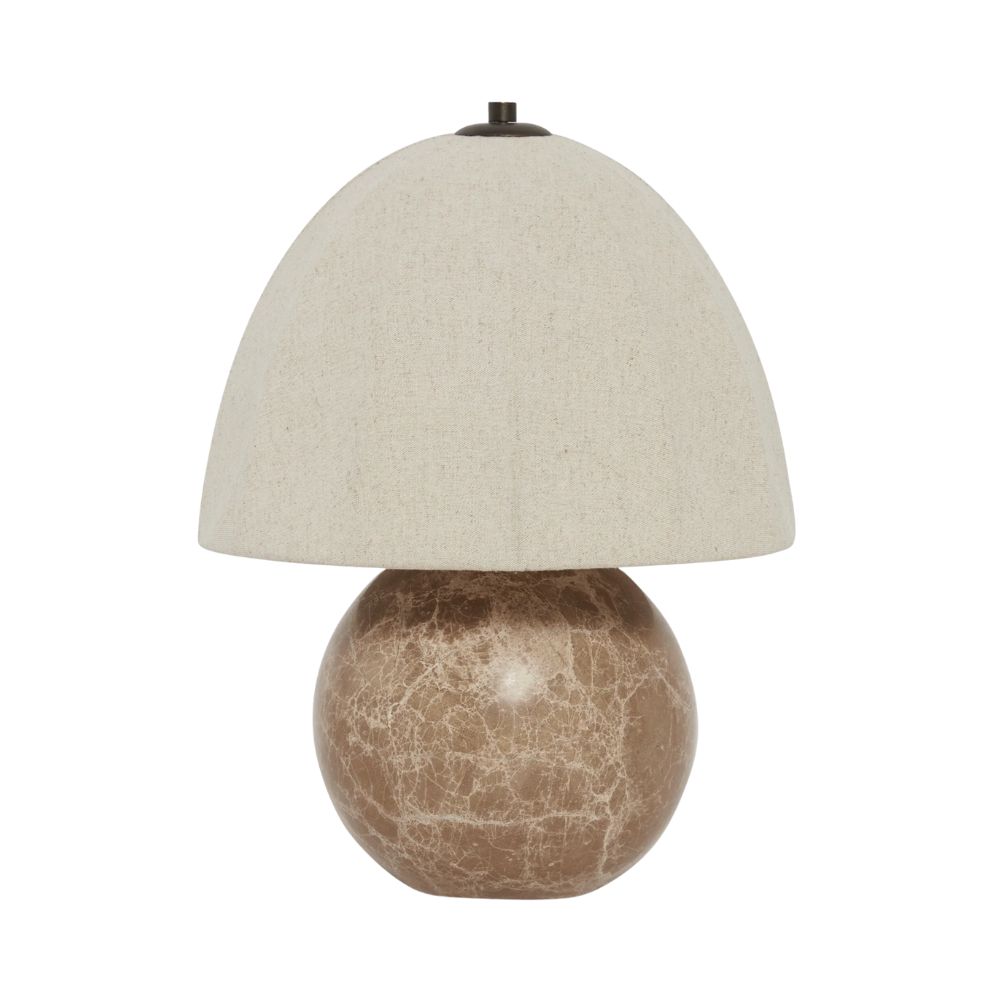
Blending soft linen with stone, the Izu Table Lamp from DISC Interiors makes the perfect bedside addition. Its rounded stone base and dome-shaped linen shade offer a natural contrast of texture and character.
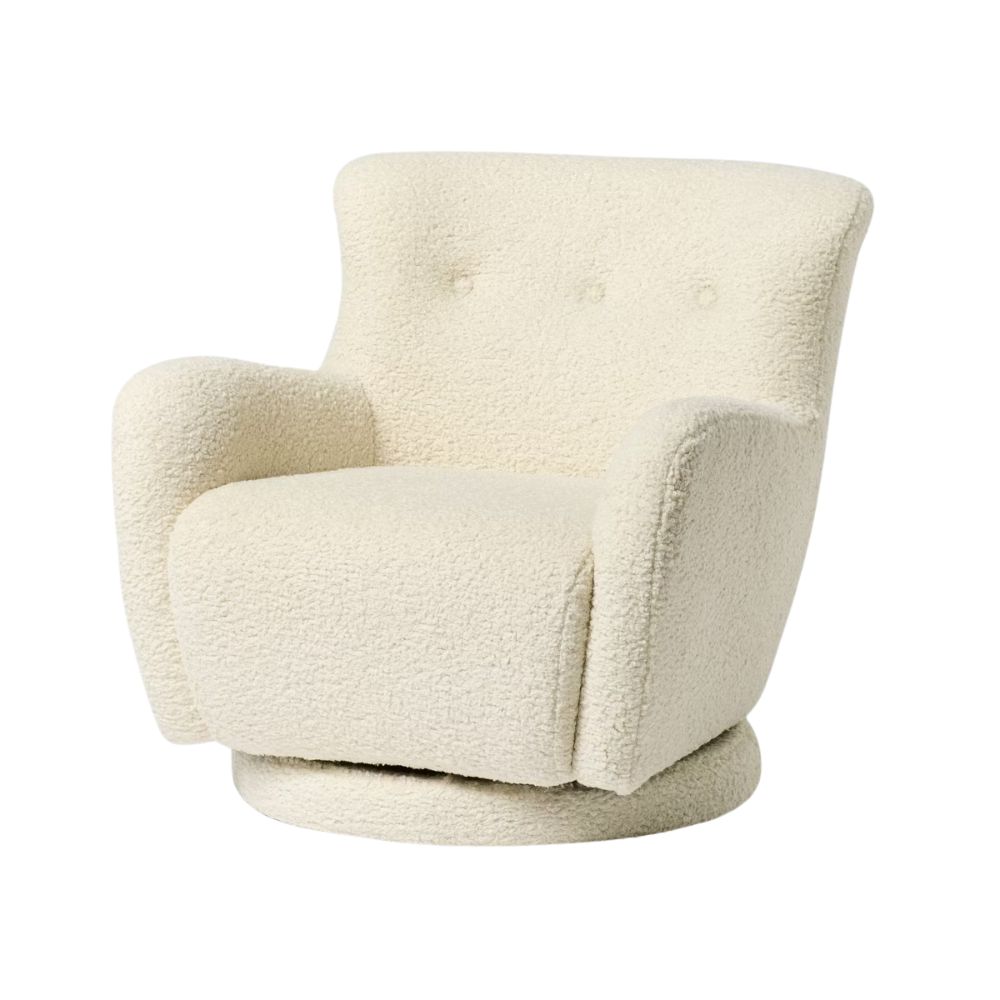
Designed by Shea McGee to create the most comfortable reading spot, this chair's super soft faux-shearling upholstery invites you to wind down. Its clean yet curved silhouette balances coziness and minimal lines.
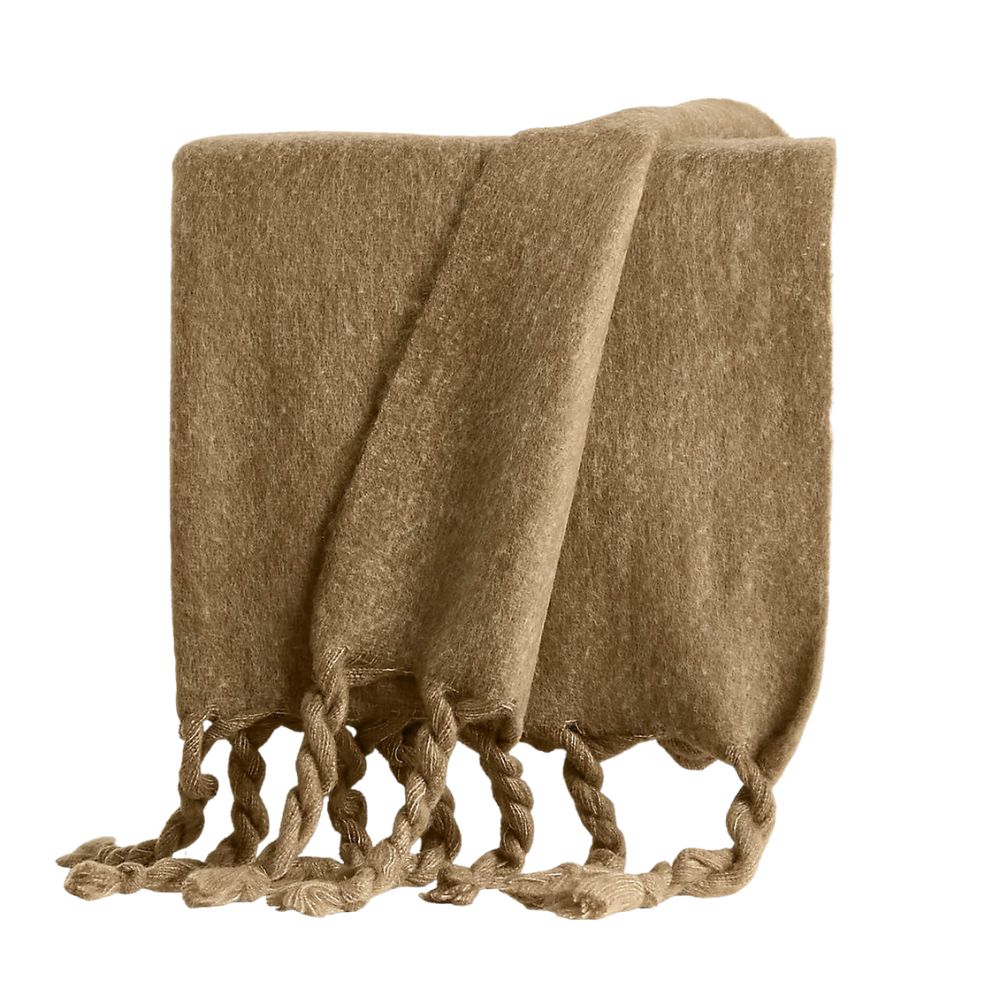
Hand-twisted by skilled artisans, when draped over the arm of a chair or the edge of a bed, this camel throw brings instant warmth. The textured wool and toasty hue, finished with an extra-long fringe, add even more tactility.

Crafted from solid Paulownia wood with an organic finish, this unique side table brings texture to pared-back spaces. Its sculptural shape and raw edges make it the ideal companion to soft furnishings and a neutral palette.
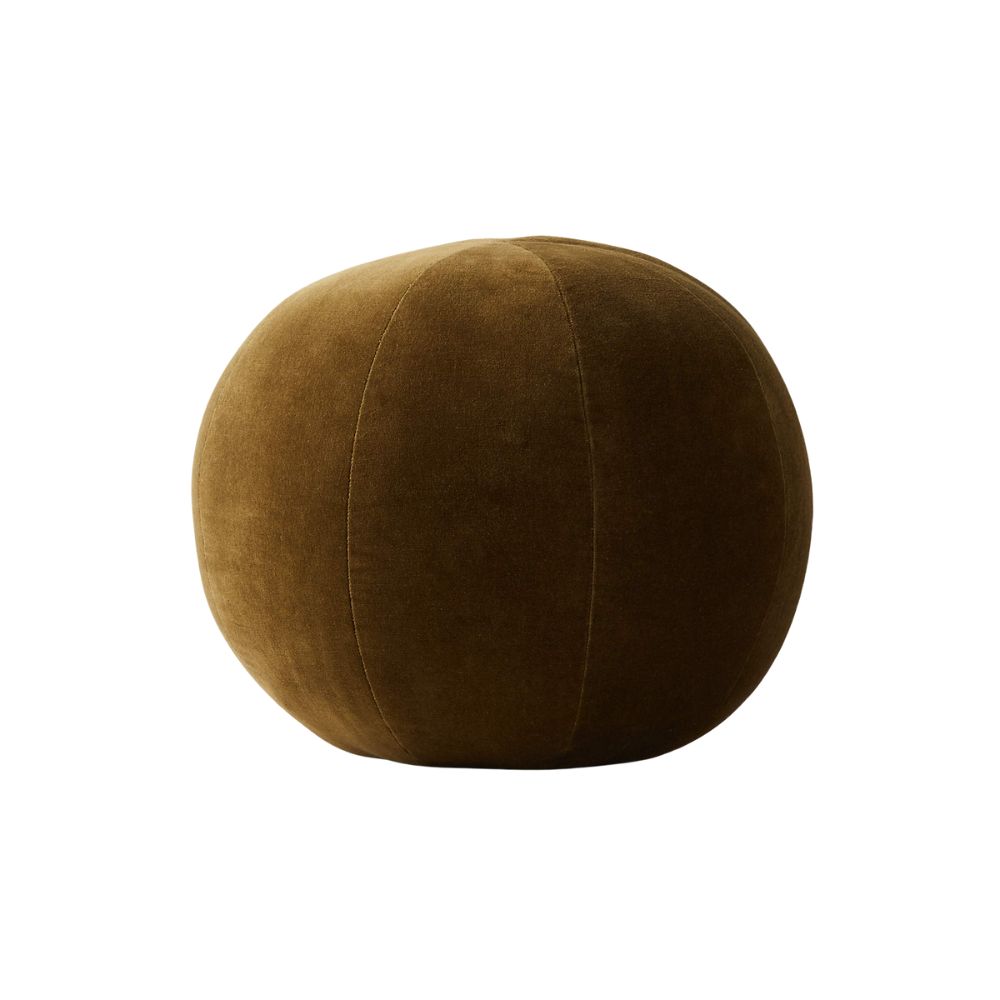
A playful yet sophisticated accent, the Terre Sphere Pillow adds a touch of color to any minimalist space. Its rich olive velvet introduces depth while maintaining the calm, tonal palette that defines the warm minimalism trend.
After years of extremes, with the cool restraint of minimalism on one end, and the exuberant layering of maximalism on the other, warm minimalism works as a comforting bridge between the two. Calm but characterful, simple but never sterile. If you're looking for more inspiration, take a look at designer Molly Kidd's favorite warm minimalism decor picks.

Charlotte is the style and trends editor at Homes and Gardens and has been with the team since Christmas 2023. Following a 5 year career in Fashion, she has worked at many women's glossy magazines including Grazia, Stylist, and Hello!, and as Interiors Editor for British heritage department store Liberty. Her role at H&G fuses her love of style with her passion for interior design, and she is currently undergoing her second home renovation - you can follow her journey over on @olbyhome